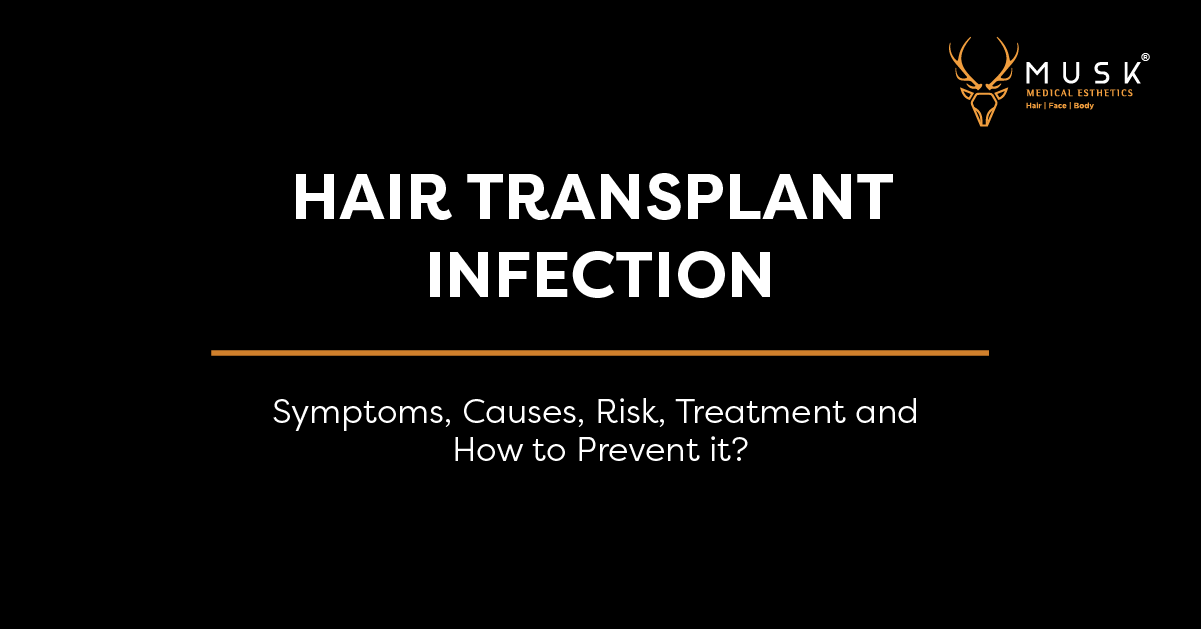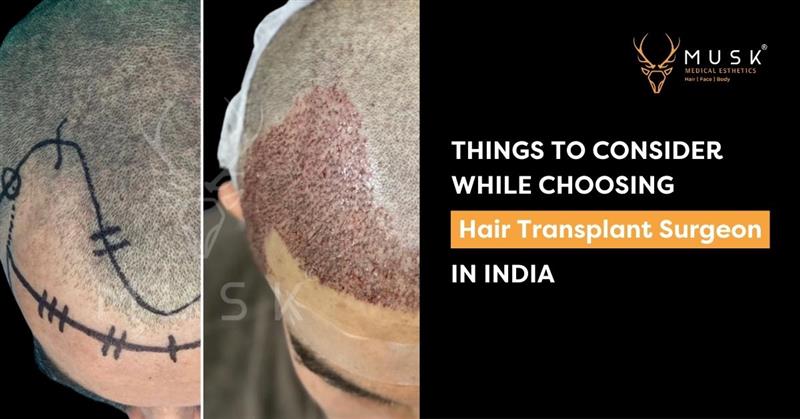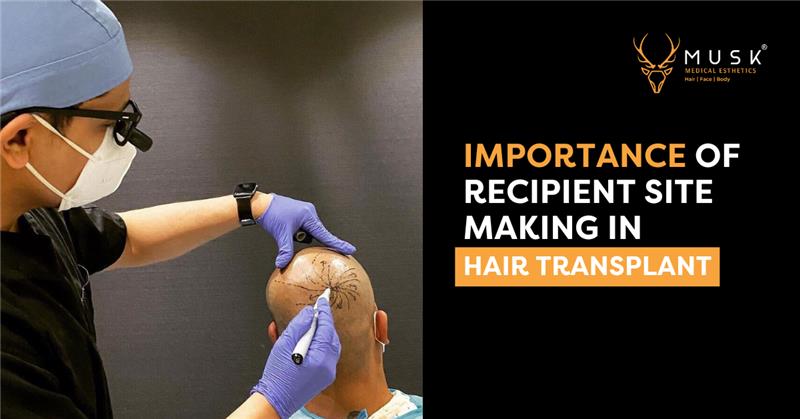Hair Transplant Infection: Symptoms, Causes, Risk, Treatment and How to Prevent it?

Are you considering getting a hair transplant?
It’s an exciting procedure that can help restore your luscious locks, but it’s important to understand the potential risks, like hair transplant infections.
You see, a hair transplant involves moving hair follicles from one part of your scalp to another.
This delicate process can sometimes lead to infections if proper precautions aren’t taken. And trust me, you don’t want to deal with an infection – it can be painful, disruptive, and even threaten the success of your hair transplant.
In this post, we’ll discuss everything about hair transplant infections including the different types, symptoms, causes, and risks involved. More importantly, we will also cover the best ways to treat an infection and how you can prevent it from happening in the first place.
So, if you’re considering a hair transplant or have already undergone the procedure, this guide is a must-read.
What is a Hair Transplant Infection?
Simply put, a hair transplant infection is an unwanted bacterial, fungal, or viral infection that can develop at the site of your hair transplant.
During a hair transplant, your surgeon carefully removes small grafts of hair follicles from one part of your scalp and transplants them to another area where you’re experiencing hair loss.
This delicate process creates tiny wounds on your scalp that need to heal properly. However, if these wounds become infected, you can run into a whole host of problems.
The infection can cause redness, swelling, and pain, and even lead to the loss of your newly transplanted hair.
The good news is that hair transplant infections are not as common as you might think. But it’s still essential to be aware of the risks and know how to spot the signs of an infection, just in case.
Symptoms of Hair Transplant Infections
Following are the main symptoms of hair transplant infections that you must keep an eye out for:
- Redness, swelling, and pain at the transplant site: One of the most obvious signs of an infection is redness, swelling, and pain in the area where the hair transplant was performed. This can occur a few days after the procedure.
- Discharge from the transplant site: If you notice any pus or yellowish, cloudy discharge coming from the transplanted area, that’s a clear indication of an infection.
- Fever and chills: A hair transplant infection can also cause you to develop a fever and experience chills, which are your body’s way of fighting off the infection.
- Itching or burning sensation: An infected transplant site may also feel itchy or cause a burning sensation, adding to the discomfort.
- Crusting or scabbing of the transplant site: As the infection progresses, you may notice crusty or scabby areas forming on the transplanted site.
- Loss of transplanted hair: One of the most concerning symptoms is the loss of the newly transplanted hair. This can happen if the infection damages the hair follicles.
- Delayed wound healing: If the transplant site is taking longer than usual to heal, that could be a sign of an underlying infection.
- Systemic symptoms: In some cases, a hair transplant infection can cause more widespread symptoms, like fatigue, nausea, and general body aches.
If you experience any of these symptoms, it’s crucial to reach out to your hair transplant surgeon right away.
Most importantly, don’t try to tough it out, as an untreated infection can quickly spiral and cause serious complications.
Causes of Hair Transplant Infections
Now that you know what to look for, let’s discuss the potential causes of hair transplant infections. Understanding the root causes can help you take the necessary precautions to avoid them.
Poor hygiene and lack of proper wound care
One of the most common culprits is poor hygiene and inadequate wound care after the procedure. If you don’t follow your surgeon’s instructions for cleaning and caring for the transplant site, it can easily become infected.
Pre-existing medical conditions
Certain underlying health issues, like diabetes or a weakened immune system, can also increase your risk of developing a hair transplant infection. These conditions can make it harder for your body to fight off any invading bacteria or fungi.
Unsanitary surgical environment or equipment
Another potential cause is an unsanitary surgical environment or improperly sterilized equipment used during the hair transplant procedure. This can introduce harmful pathogens into the transplant site.
Improper technique or lack of experience by the surgeon
If the hair transplant is not performed using proper surgical techniques or by an experienced, skilled surgeon, it can also increase the likelihood of an infection.
Failure to follow post-operative instructions
Even if the hair transplant itself is done well, if you don’t follow your surgeon’s post-operative instructions, like taking medications or keeping the area clean, you’re more susceptible to developing an infection.
Identifying the root cause of a hair transplant infection is crucial, as it can help your surgeon determine the best course of treatment.
This is why it’s always a good idea to have an open and honest conversation with your hair transplant specialist about any potential risk factors you may have.
Risk Factors for Hair Transplant Infections
Now that you’ve learned about the causes of hair transplant infections, let’s also talk about the various factors that can increase your chances of developing a hair transplant infection.
1. Patient factors:
Your age, overall health, smoking habits, and the use of certain medications can all play a role in your susceptibility to hair transplant infections. Older patients, those with weakened immune systems, and smokers tend to have a higher risk.
2. Procedure-related factors:
The specific hair transplant procedure you undergo can also impact your infection risk. Larger graft counts, multiple sessions, and the Follicular Unit Transplantation (FUT) method tend to have a higher risk compared to the Follicular Unit Extraction (FUE) technique.
3. Postoperative factors:
Proper wound care and follow-up after the hair transplant are crucial. If the transplant site doesn’t heal properly or you don’t attend your scheduled follow-up appointments, you’re more likely to develop an infection.
All in all, it’s essential to have an open and honest discussion with your hair transplant surgeon about any personal or medical factors that could increase your risk of infection.
This will help your surgeon develop the best plan to minimize those risks and ensure a successful, complication-free procedure.
Diagnosis and Treatment of Hair Transplant Infections
Alright, let’s say you’ve noticed some symptoms of a hair transplant infection. What happens next?
The first and most important step is to contact your hair transplant surgeon right away. Early diagnosis and prompt treatment are critical to addressing the infection and preventing it from worsening.
During your appointment, your surgeon will likely conduct a thorough physical examination of the transplant site.
They may also order additional tests, such as:
Cultures: Your surgeon may take a sample of any discharge or fluid from the transplant site and send it to a lab for bacterial or fungal culture testing.
Biopsies: In some cases, a small sample of the affected tissue may be taken for further analysis under a microscope.
These tests can help identify the specific type of infection you’re dealing with, which is crucial for determining the appropriate treatment.
Once the diagnosis is made, your surgeon will likely prescribe one or more of the following treatments:
- Topical and oral medications: Depending on the type of infection, your surgeon may prescribe topical creams, ointments, oral antibiotics, antifungals, or antivirals to combat the infection.
- Wound care: Proper wound care, including regular cleaning and dressing changes, is essential for helping the transplant site heal and preventing the infection from spreading.
- Addressing underlying conditions: If an underlying health issue, like diabetes or a weakened immune system, is contributing to the infection, your surgeon will work with you to address and manage that condition.
In severe cases, you may even need to be hospitalized and receive intravenous antibiotics or other medications to get the infection under control.
The key is to follow your surgeon’s instructions to the letter and attend all scheduled follow-up appointments. This will ensure the infection is properly treated and that your hair transplant can still be a success.
How to Prevent Hair Transplant Infections?
Now that you know all about hair transplant infections – the symptoms, causes, risks, and treatment — let’s talk about the most important thing: prevention.
The good news is that with the right precautions, you can significantly reduce your chances of developing a hair transplant infection.
Here are some tips to help you stay infection-free:
- Choose an experienced, reputable surgeon: When it comes to hair transplants, the skills and experience of your surgeon make a big difference. Do your research and select a hair transplant specialist with a proven track record of successful, complication-free procedures.
- Prepare properly for the procedure: Follow any pre-op instructions from your surgeon, like discontinuing certain medications or making adjustments to your lifestyle. This can help reduce your risk of infection.
- Maintain excellent wound care: After the hair transplant, be diligent about keeping the transplant site clean and following your surgeon’s instructions for wound care. This includes regularly cleaning the area, changing dressings, and avoiding activities that could disrupt the healing process.
- Attend all follow-up appointments: Don’t skip those post-op checkups! Regular follow-up visits with your surgeon are crucial for monitoring the transplant site and catching any signs of infection early on.
- Address any underlying health conditions: If you have a medical condition, like diabetes or a weakened immune system, work closely with your surgeon and primary care provider to ensure it’s well-managed before and after the hair transplant.
- Practice good hygiene: Maintain good personal hygiene, including washing your hands frequently and avoiding touching the transplant site unnecessarily.
If you follow these preventive measures, you’ll be well on your way to having a successful, infection-free hair transplant experience.
Remember, it’s much better to take steps to prevent hair transplant infections in the first place, rather than trying to deal with them later. An ounce of prevention is worth a pound of cure when it comes to this kind of procedure.
Conclusion
Hair transplant infections are a potential complication of hair restoration procedures, but they’re not as common as you might think.
In fact, if you learn about the symptoms, causes, and risk factors before getting the hair transplant procedure, you can be better prepared to spot an infection early and get the proper treatment.
The most important things to remember are to choose an experienced hair transplant surgeon like Musk Clinic, follow all pre- and post-op instructions carefully, maintain excellent wound care, and address any underlying health conditions.
Doing so will go a long way in preventing a hair transplant infection and ensuring a smooth, successful hair restoration journey.



